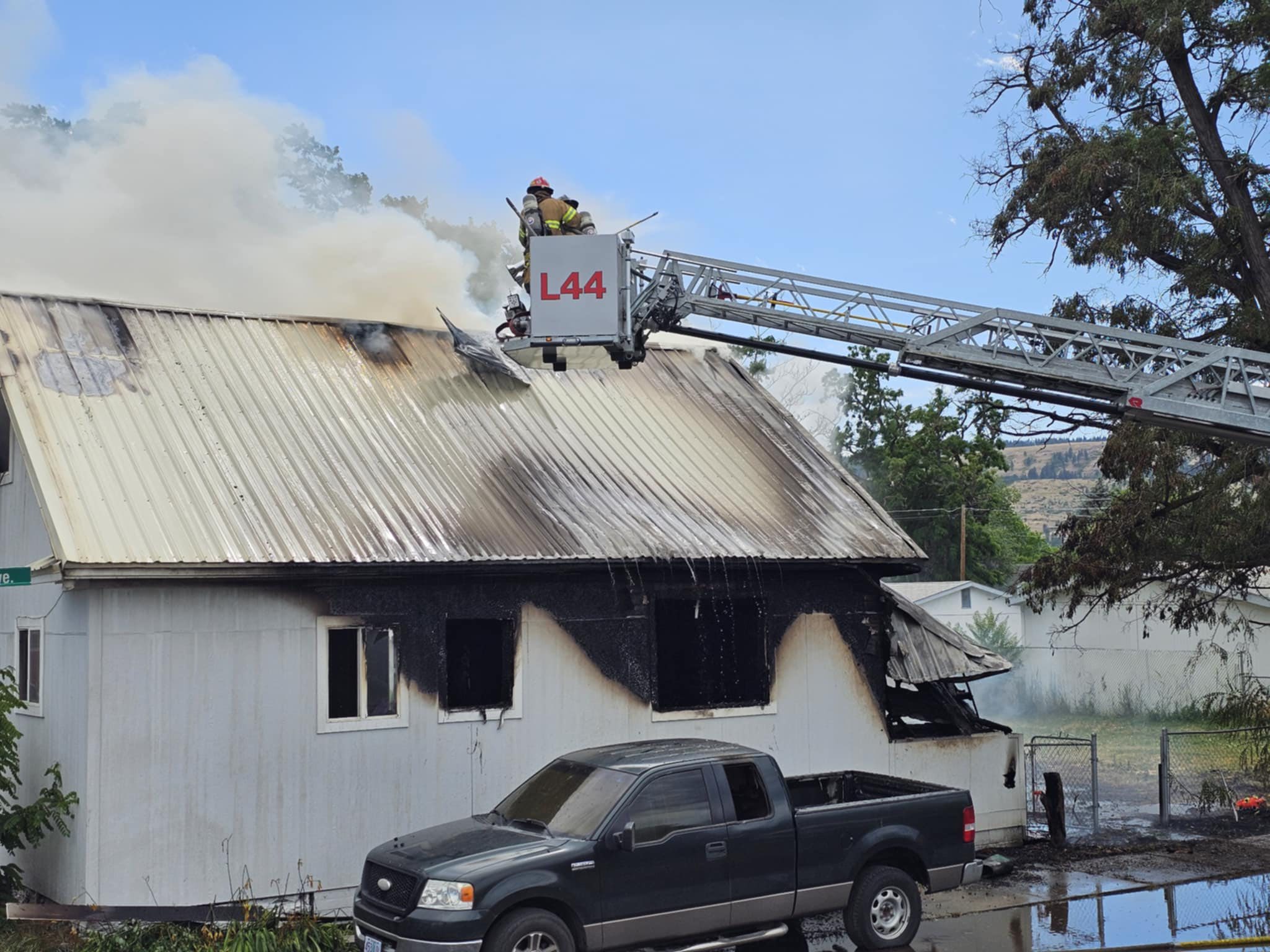News of the Weird
Published 5:45 am Tuesday, September 1, 2020

- Photo from SkyDrive Inc.This flying car from SkyDrive Inc. conducts a successful flight during a public test recently in Tokyo.
Flying car test flight a success
TOKYO — SkyDrive Inc. announced it conducted a public demonstration flight of its new SD-03 flying car model on Aug. 25. It was the first public demonstration of a flying car in Japan.
The flight took place at the 2.5-acre Toyota Test Field, which is one of the largest test fields in Japan and home to the company’s development base.
The single-seat SD-03 took off in the early evening and circled the field for about four minutes, according to the press release from SkyDrive. A pilot was at the controls, but a computer-assisted control system helped ensure flight stability and safety, and technical staff at the field monitored flight conditions and aircraft performance at all times.
SkyDrive designed the craft to be the world’s smallest electric Vertical Take-Off and Landing Vehicle. It measures a little more than 6 feet tall, about 13 feet wide and 13 feet long.
Painting wind turbines black could save lives of birds
SMOLA, Norway — Painting the blades of wind turbines black could save the lives of birds.
Researchers working on a wind farm on the Norwegian archipelago of Smola painted a single blade on a white wind turbine black. That change resulted in the number of bird deaths dropping more than 70%.
The majority of bird fatalities at wind farms occur through collision with moving turbine rotor blades. The study, “Paint it black: Efficacy of increased wind turbine rotor blade visibility to reduce avian fatalities,” tested the efficacy of contrast painting one rotor blade black to reduce bird collisions.
The hypothesis was the black paint would allow birds to better see the turbine blades, based on a previous study. The researchers in August 2013 selected a test group of four turbines at the 68-turbine wind farm in Smola, Norway, where they painted one of the three rotor blades black on each of the four turbines. The experiment also used four control turbine that lacked any black painting.
Prior to the painting, according to the study “extensive and long-term baseline data from beginning of 2006 and onwards were available from regular fatality searches using trained dogs” to retrieve bird carcasses within 100 meters of the wind farm. The study ran until the end of 2016.
From 2013-16, the number of recorded carcasses increased at the control turbines (seven compared to 18), but they decreased at the painted turbines (11 compared to six).
“Overall, there was an average 71.9% reduction in the annual fatality rate after painting at the painted turbines relative to the control turbines,” according to the study.
The U.S. Fish and Wildlife Services reported bird deaths from turbine collisions are between 140,000 and 500,000 birds per year, and meeting Department of Energy mandates to increase wind energy capacity could mean bird deaths resulting in collisions with turbines could reach 1.4 million birds per year.
That’s a wrap
CAMBRIDGE, England — The University of Cambridge last week reported the first complete dinosaur skeleton ever identified has finally been studied in detail, completing a project that began more than 160 years ago.
The skeleton of Scelidosaurus was collected in the 1850s on the west Dorset’s Jurassic Coast. The rocks in which it was fossilized are around 193 million years old, close to the dawn of the Age of Dinosaurs.
This specimen — the first complete dinosaur skeleton ever recovered — was sent to Richard Owen at the British Museum, according to the university’s press release.
Owen, who invented the word dinosaur, would publish two short papers on the anatomy of Scelidosaurus but did not reconstruct the dinosaur, leaving many details blank, including its relationship to other known dinosaurs of the time.
During the past three years, Cambridge’s Department of Earth Sciences worked to finish what Owen started and created a detailed description and biological analysis of the skeleton of Scelidosaurus, the original of which is stored at the Natural History Museum in London, with other specimens at Bristol City Museum and the Sedgwick Museum, Cambridge.
“The results of this work, published as four separate studies in the Zoological Journal of the Linnean Society of London,” the press release stated, “not only reconstruct what Scelidosaurus looked like in life, but reveal that it was an early ancestor of ankylosaurs, the armour-plated ‘tanks’ of the Late Cretaceous Period.”
The work also could revamp dinosaur classification. Scientists for more than a century have classified dinosaurs primarily according to the shape of their hip bones: they were either saurischians (lizard-hipped) or ornithischians (bird-hipped).
Norman and his former Ph.D. students Matthew Baron and Paul Barrett argued in 2017 in a study in Nature suggested bird-hipped dinosaurs and lizard-hipped dinosaurs such as Tyrannosaurus evolved from a common ancestor, potentially overturning more than a century of theory about the evolutionary history of dinosaurs.








